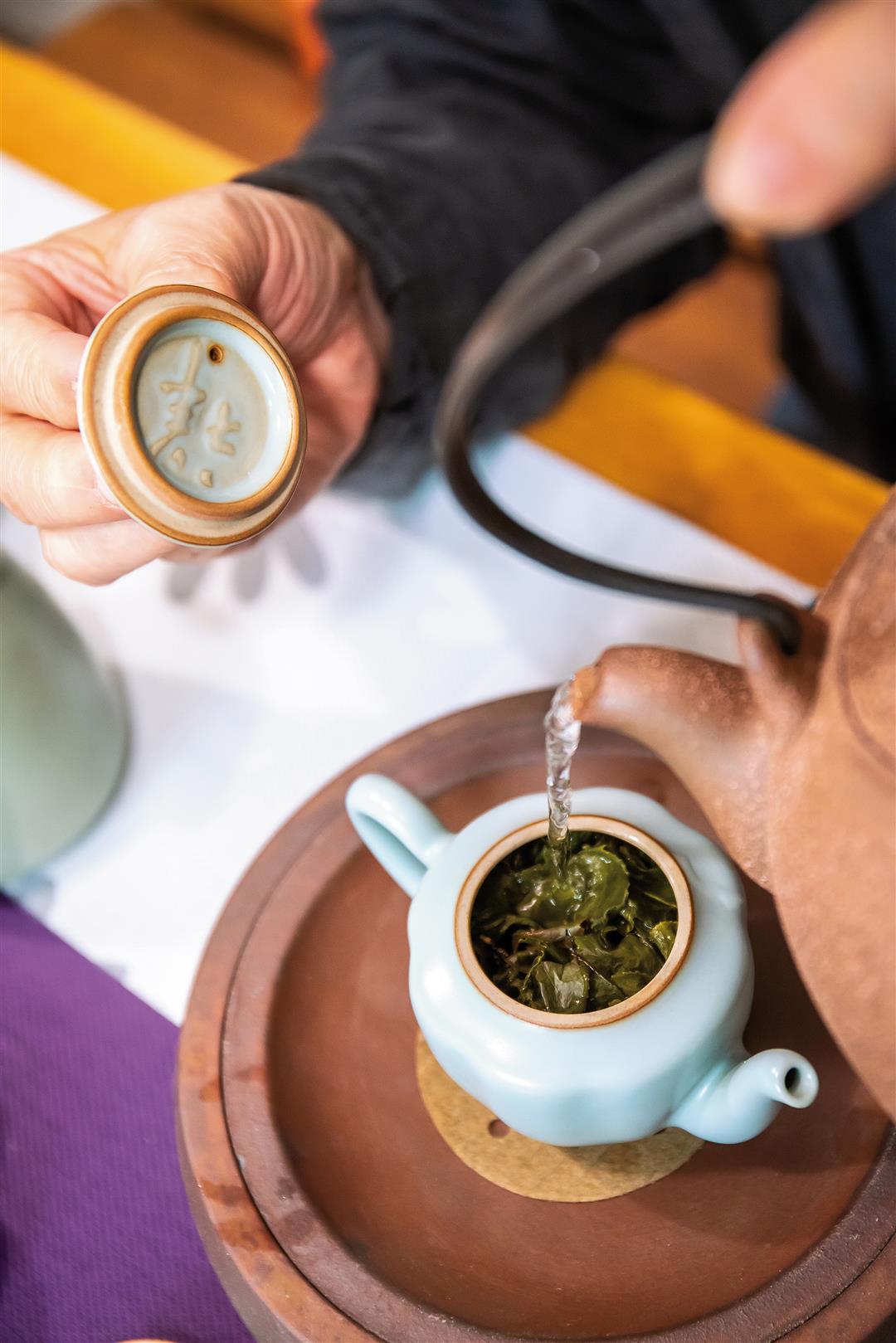The spirituality of the “way of tea”
In the Song Dynasty, the “four arts of living” were “diancha, painting appreciation, flower arranging, and burning incense,” which emphasized that there is beauty everywhere in life that not only satisfies the physical senses, but also, through appreciation of the arts, arouses inner emotions that gradually raise the life consciousness of the individual. From the Song Dynasty onward, this kind of aesthetic experience became a fundamental attainment in the practice of self-cultivation by Chinese literati, and spread abroad to influence the aesthetic development of neighboring countries.
Over the past 500 years, since the time of the Ming Dynasty, tea culture has been simplified, and the complex tea decocting and diancha implements used in the Tang and Song dynasties have moved to the periphery of history’s stage. Tea contests had fallen out of popularity by the Ming, when the main form of tea-making was simply steeping loose tea. Drinking tea and admiring flowers became the symbols of good taste, and as the elegant cultural elements of the educated class slowly spread into the common culture of ordinary people, serving tea and giving flowers grew to be part of the customs and etiquette of popular daily life.
The Qing Dynasty carried on the simple and elegant style of the Ming. In this era, literati participated in the design of tea ware, for example by engraving a seal, writing an inscription, or painting images on zisha teapots, thereby raising the cultural value of the objects. At this time, tea became one of the “seven necessities of starting the day” (firewood, rice, oil, salt, sauce, vinegar and tea), indicating that drinking tea was already a common practice among ordinary people.
In the 1970s to the late 1980s, as Taiwan’s economy boomed, people got more free time and took up new pursuits in living and dining. Teahouses became important spaces for tea connoisseurship, socializing, and recreation.
Meanwhile, tea parties and tea ceremony gatherings have gradually developed from simple forms at first to mixed art events incorporating flower arranging, calligraphy, appreciation of incense fragrances, music, and even dance.

Lin’s Ceramic Studio makes its own version Ru ware, which is warm and understated, as a way of paying respect to the Ru kiln of the Song Dynasty.